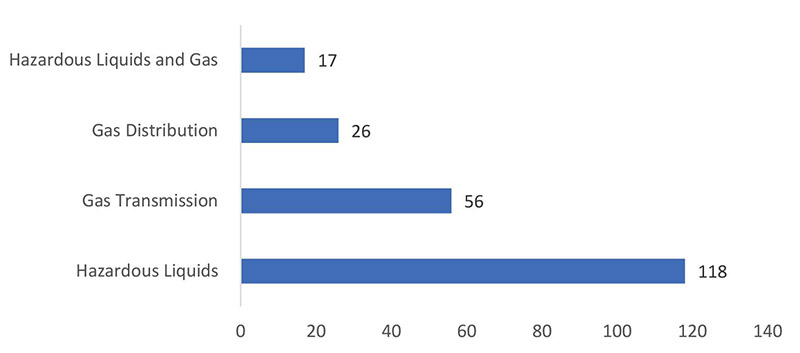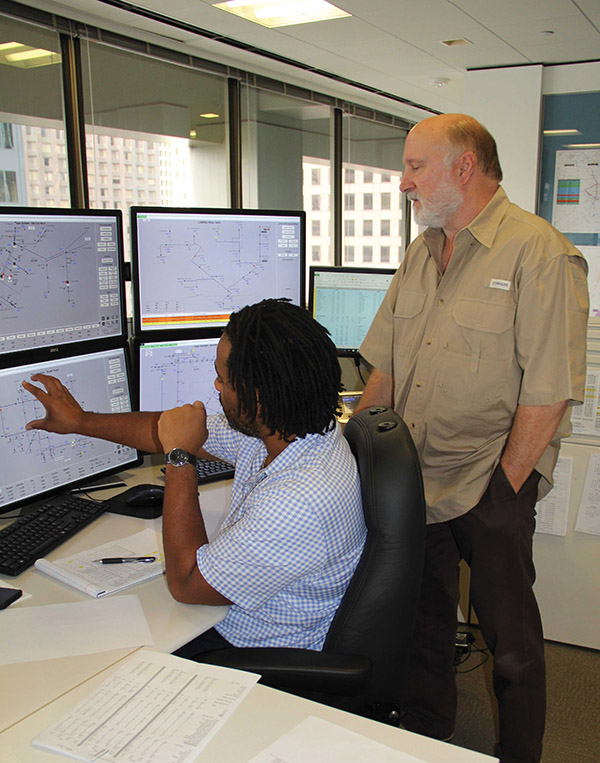April 2018, Vol.245, No.4
Features
Communication and Control Rooms: Mandated Training For Controllers
By Michele Terranova and Christine Wagner, Pipeline Performance Group, LLC
What does it take to have effective communication? Do you communicate effectively? Perhaps you are confident that your communication skills are effective, but what about people you work with? Do they need more training?
As consultants, we have spent the last several years studying human factors in the pipeline industry – trying to understand how humans interact with other elements of the pipeline and control room systems. In that time, we have repeatedly asked those same communications questions of controllers. Since 2012, over 900 controllers have participated in our 217 workload assessments. These controllers represent 69 control rooms in the U.S., Canada and Australia, and are responsible for gas transmission, gas distribution, hazardous liquids or refineries (Figure 1).
The Pipeline and Hazardous Materials Safety Administration (PHMSA) regulation has made it mandatory to have team training for controllers and those individuals that interact with the control room.
The regulation, "195.446 (h)(6) and 192.631 (h)(6) states, Control room team training that includes both controllers and other individuals who would reasonably be expected to interact with controllers (control room personnel) during normal, abnormal or emergency situations."
This control room management (CRM) regulation calls out certain specific individuals to whom the regulations apply, such as controllers, supervisors, and field personnel. Additionally, an understanding of CRM and CRM training requirements is essential for other individuals that interact with controllers, particularly those individuals that may affect the ability of a controller to safely monitor and control the pipeline during normal, abnormal, and emergency situations.
Based on previous accidents and incidents in the pipeline industry and in other related high-risk industries such as aviation, the National Transportation Safety Board (NTSB) recognized the importance of communication and other non-technical skills to safe operations. Most controllers also recognize this, and in our research most controllers report that it is important for them to have strong skills in verbal communication (97%), interpersonal interactions (95%) and written communication (88%).
Communication is essential in any activity that involves more than one person. It is even more important in high-risk work situations. When controllers communicate properly, they ensure safe working conditions. Good communication optimizes worker understanding and decreases the risk of a mistake. Communication is crucial to a safe work environment.
Workload studies document that along with operational and monitoring activities, controllers spend about 7% of their time communicating by phone or radio, and almost 9% of their time communicating face to face in the control room.
About 11% of their time is spent on written communications such as log sheets and paperwork (not including emails). While over 27% of time in the control room is spent on these verbal and written communications, in our surveys of controllers, only 82% agreed that they received the necessary verbal and written information to do their job effectively as a controller.
The PHMSA regulation mandates training to teach controllers how to communicate and work effectively as a team. Increasing the communication skills of each controller leads to a decrease in mistakes and allows for increased individual and team productivity. Less than half of controllers we surveyed reported that they received communications training from their company (47%). While a majority of the controllers surveyed agreed that they did not need additional communications training (63%), fewer think that others they work with do not need additional training (44%).
Communications is especially important as control rooms have become more diverse. Our research shows that controller populations are about 92% male and 8% female. Over the six years that we have conducted this research, the percentage of female controllers has increased. Communication skills and styles vary by gender. Differences in communication skills and styles also vary by age. Our research shows that the average controller age is 45, but ranges from 22 to 67 years old. While most of the controllers we surveyed felt that their own communication skills were adequate (96%), fewer believed that other controllers, control room managers, and support personnel had adequate communication skills (80%).
How do controllers and others communicate? They communicate throughout their shift using words, facial expressions, tone of voice, posture, actions, dress, appearance, presence, and even after their shift through their written logs. Communication is the ability to speak and listen through both verbal and non-verbal means. To communicate effectively, a person must be able to share information, listen to others, be clear, and be assertive.
Sharing information properly is the ability to report relevant information and hazards to colleagues and others, and complete logs and reports as required. To listen well, controllers must be able to listen and respond to others appropriately. They need to understand and acknowledge what is being said, and respond accordingly.
Controllers should also be clear and concise when communicating. It is very important that they identify themselves clearly, and explain everything quickly and effectively so that all information is understood accurately. An assertive controller is able to challenge others when appropriate and state their own views without being aggressive. Being assertive allows for respectful communication between people with differing views.
In our research, we found that 92% of controllers believed communications between controllers were adequate during normal operations. A slight break down appeared to occur during operational changes such as maintenance or schedule updates, with only 82% of controllers believing communication to be adequate. However, during high-risk situations, such as abnormal or emergency operations, 89% of controllers agreed that communications between controllers was adequate.
Other individuals to which team training might pertain likely vary by operator and control room, depending on specific procedures and roles in the control room; but they could include individuals such as technical advisors, engineers, managers, leak detection analysts and on-call support. Our research with controllers shows that communication between controllers and personnel outside the control room was less adequate than communication between controllers.
During normal operations 85% of controllers agreed that communication with support personnel was adequate. Once again, this breaks down during operational changes such as maintenance or schedule updates, with only 74% of controllers believing communication to be adequate. Communication between controllers and support personnel appeared to once again be better during high-risk situations (83%).
Written communications are also vital to control room activities, however, only 67% of controllers report that manuals and other documents specify what information needs to be communicated to and from controllers. Other methods of communication, such as email and verbal communication receive higher ratings (77%) of adequacy. When controllers were asked whether they recorded necessary information or events in a written or electronic logbook, most controllers agreed that they did (88%).
So how do we keep communication working effectively in the control room? We asked controllers what worked well related to communications and their job (Figure 2). Information in written form was the method most controllers believed to be most effective with regards to communication.
Many controllers said logging information was the best way to keep track of information and pass it on to the next shift. Additionally, controllers agreed communicating through email was useful and beneficial. Email was believed to work well because information could be transmitted quickly to the controller. Controllers also believed working as a team facilitated more effective communication. When controllers remain conscious of working together, they communicate more often and more efficiently.
We also asked controllers what didn’t work well related to communications and their job. A number of controllers shared that written communications had a lot of room for improvement. Poor communication, or a lack thereof, from the field, maintenance or support, such as SCADA support or schedulers was cited as the next most frequent complaint. Keeping controllers in the communication loop is essential to keeping operations safe.
Effective controller to controller communication is key to safe operations. In our research, controllers reported that sometimes verbal instructions or shift turnover were conducted without a complete written report or log. Logs, reports, manuals and other procedural documentation should be kept updated at all times. Distractions in the control room, high phone call volumes, and too many non-operations related emails are also issues that can interfere with a controller’s ability to effectively communicate, and ultimately with the controller’s productivity.
So how do we keep communication effective in the control room and with those that interact with the control room? First get a baseline of where your control room is today with regards to written, verbal, and interpersonal skills. Survey your controllers, management and others that they interact with. Find out where there is room for improvement.
Conduct observations in the control room. Notice where the distractions exist, both in the tools the controllers use, such as email, paperwork and software and in the physical distractions in the control room, such as noise and people. Then seek out ways to improve the communication skills and eliminate barriers to good communication. Communication is key to effective teams, productivity and reducing the risks of errors. P&GJ
Authors:

Michele Terranova holds a Ph.D. and is a principal of Pipeline Performance Group, LLC. She has over 25 years of experience in human factors and user interface design Terranova previously held positions as director of Human Factors Research at Concord Associates, Inc. and senior research scientist at The Oak Ridge National Laboratory. She has conducted workload assessments with 60 control rooms.

Christine Wagner is a full-time college student working toward a doctorate in psychology and a career in counseling. Wagner has internship experience in human factor research in the pipeline industry and as a dance instructor.







Comments